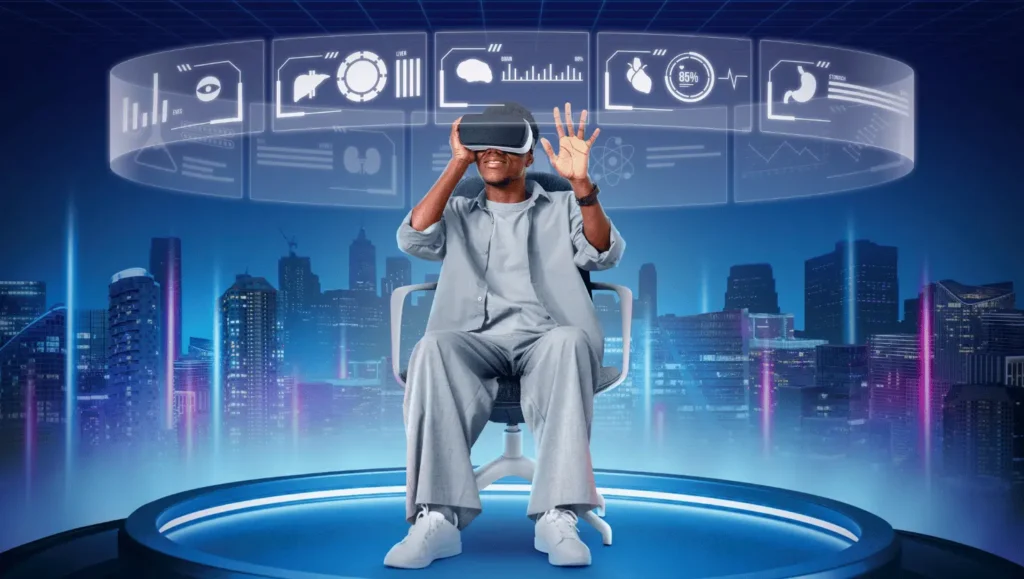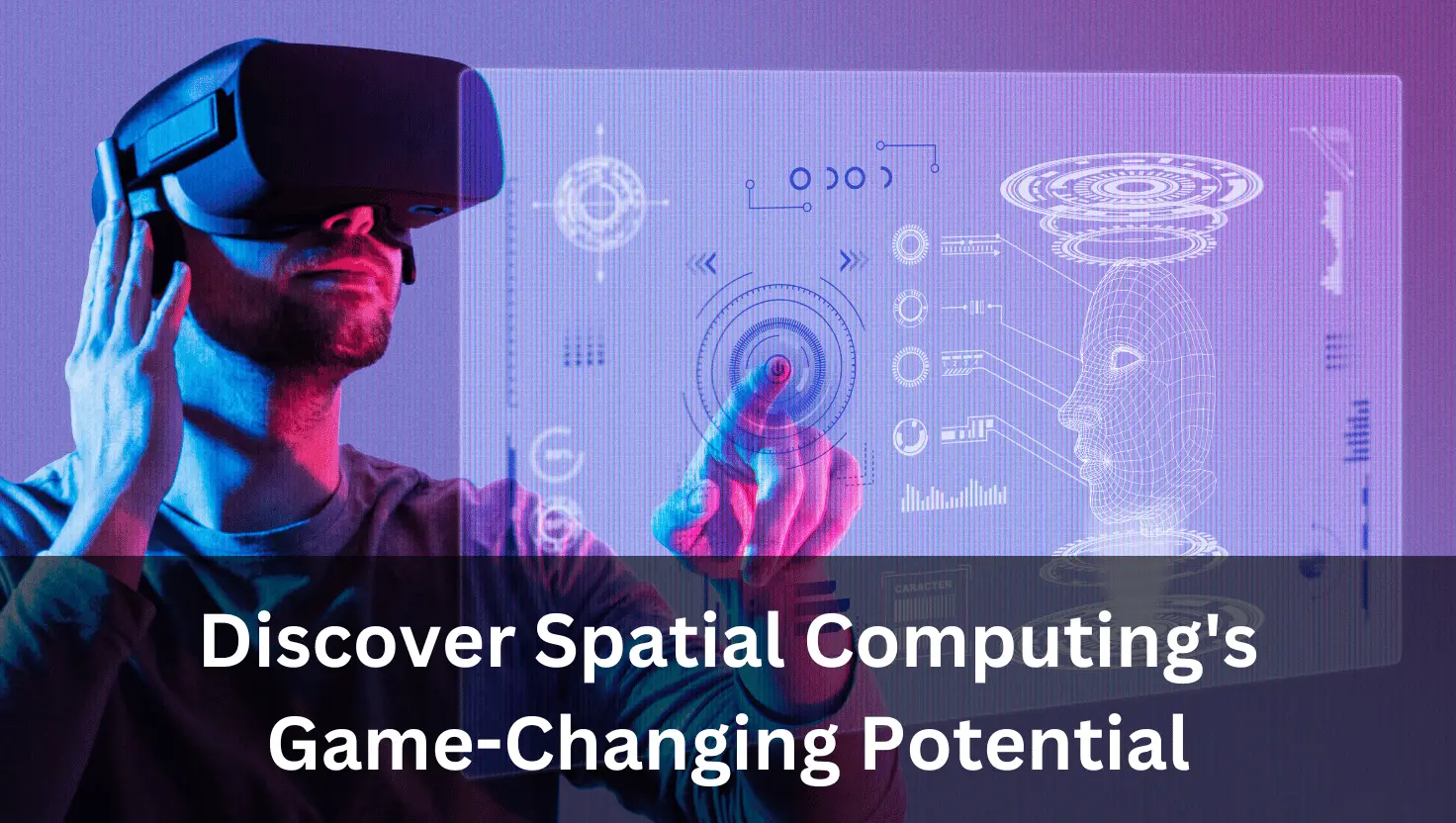There have been significant developments in spatial computing over the recent years, which has merged the virtual with physical life. By doing this, it has transformed industries and everyday lives for people. It is a very new technology, but how does it work? And why are big tech companies and other innovators keen on it? The article examines spatial computing market, its uses and what it means for future.
What is Spatial Computing?
Spatial computing essentially entails computers that can interact normally with the surrounding environment thereby allowing individuals to manipulate both digital and real-life objects together. Spatial computing definition reveals that this technology utilizes augmented reality (AR), virtual reality (VR), mixed reality (MR), artificial intelligence (AI) advances to provide immersive and intuitive experiences.
To name one, Apple’s Vision Pro are spatial computing devices which can allow users to overlay virtual objects onto the real world, move them by waving and interact in unexpected ways with their environment; Apple’s approach exemplified by its Vision Pro headset integrates eye tracking, hand gestures and voice input for improved user experience.
How Spatial Computing Works
It works by combining several advanced technologies:
1.Computer Vision:
This involves processing visual data from cameras and sensors in order to map our physical environment.
2.Sensor Fusion:
By merging data from various sensors like LiDAR and accelerometers a high level of certainty about the surrounding is achieved.
3.Spatial Mapping:
It is capable of building 3D models of spaces, so that virtual objects can be placed within them convincingly or users may touch them.
Such techniques allow spatial computing companies to make gadgets that perceive depth, arrangement in space as well as user intentions making interactions more intuitive and engaging.
Applications of the spatial computing
Spatial computing has several potential applications across various industries that improve everyday life. The following are some inspiring examples of spatial computing.
1. Gaming and Entertainment
The use of spatial computing has transformed gaming and entertainment into an immersive experience where users can interact with virtual objects and characters in real-world environments. For instance, with devices like Apple Vision Pro, one can have front row court-side seats at an NBA game or reminisce in 3D.
2. Education and Training
Spatial computing provides practical/ hands-on learning from medical students performing surgeries through virtual reality to engineers who simulate building and testing prototypes. This enhanced training results in better acquisition and retention of skills.
3. Healthcare
During surgery, doctors may utilize spatial computing to overlay diagnostic information on a patient’s body to improve precision leading to better outcomes. Virtual assistants as well as specialized rehabilitation programs can help patients with any form of physical or mental impairment.
4. Architecture and Design
Architects and designers can visualize their ideas in real-life situations without having physical models through which they improve their designs. This cuts costs while expediting the design process.
5. Manufacturing and Productivity
There are significant productivity improvements as a result of the adoption of spatial computing in manufacturing. For example, specialized digital twins referred to as spatial twins can illustrate workflow bottlenecks in real-time, identify inefficiencies, and optimize processes. They integrate spatial and operational data making these twins provide an all-inclusive context.

Spatial Computing Market: Growth and Opportunities
The market for spatial computing is growing rapidly as AR/VR solutions become more popular across multiple industries. Leading players such as Apple, Microsoft, and Magic Leap have made substantial investments in this technology. The launch of Apple Vision Pro which is touted by Apple as a game changer for its own brand of virtual reality fits into the company’s strategy to dominate this industry.
As sensors, displays, and AI progress further despite high hardware costs and low battery life there will be increasing access to the technology called ‘spatial computing’. As it becomes more matured so its applications evolve offering many new opportunities for innovators.
Spatial Twins vs. Digital Twins: The Key Difference
Despite the fact that they both give useful insights, spatial twins and digital twins differ in scope and context. A digital twin is focused on reproducing the functionality of a machine or system whereas a spatial twin offers comprehensive understanding of an environment. For instance, in manufacturing scenario, spatial twin can reveal some hidden factors like a leaky pipe which affects the performance of a machine that may not be detected by traditional digital twin.
Spatial twins are particularly important for capturing and analyzing the complexity and variability inherent in real-world environments. By providing less biased insights, they enhance decision-making abilities as well as problem-solving capabilities within dynamic context.
Benefits of Spatial Computing
A number of benefits come with this Technology and here are just some few:
- Real-Time Collaboration: It helps enable seamless interaction between users and environments locally or remotely
- Enhanced Training: Gives hands-on experiences involving contextual information needed for learning.
- Improved Customer Service: This entails spatializing remote troubleshooting to-facilitate remote problem solving.
- Increased Productivity: This enhances productivity through Spatial Analytics aimed at identifying inefficiencies and streamlining workflow processes.
- Cost Reduction: It enhances first-time-fix rates while reducing reliance on expert dispatches.
- Sustainability: Remote troubleshooting and collaboration minimizes travel.
The Future of Spatial Computing
As the market for spatial computing continues to grow, it is increasingly clear just how much of an impact it can have on industries. For instance, this technology has been utilized in developing Apple innovations that are based on spatial computing in the healthcare, manufacturing and entertainment sectors with others.
Nevertheless, there are several impediments that need to be surmounted in order to ensure widespread adoption such as high costs, device comfort and battery life. The future seems bright for this game-changing technology with continued advancements and increased rivalry among spatial computing companies.

Conclusion
Spatial computing is not just another technological fad but represents a revolution in our relationship with the digital and physical worlds. Through the incorporation of cutting-edge technologies like AI, VR and AR among others, spatial computing presents unmatched prospects for innovation across all sectors of business. Limitless possibilities abound with early adoption by industry leaders like Apple.
It goes without saying that everyone from industry leaders to tech enthusiasts or people who just want to know what will happen next can find something worth their time when it comes to keeping up with developments in spatial computing. We are still at the beginning of the process.

